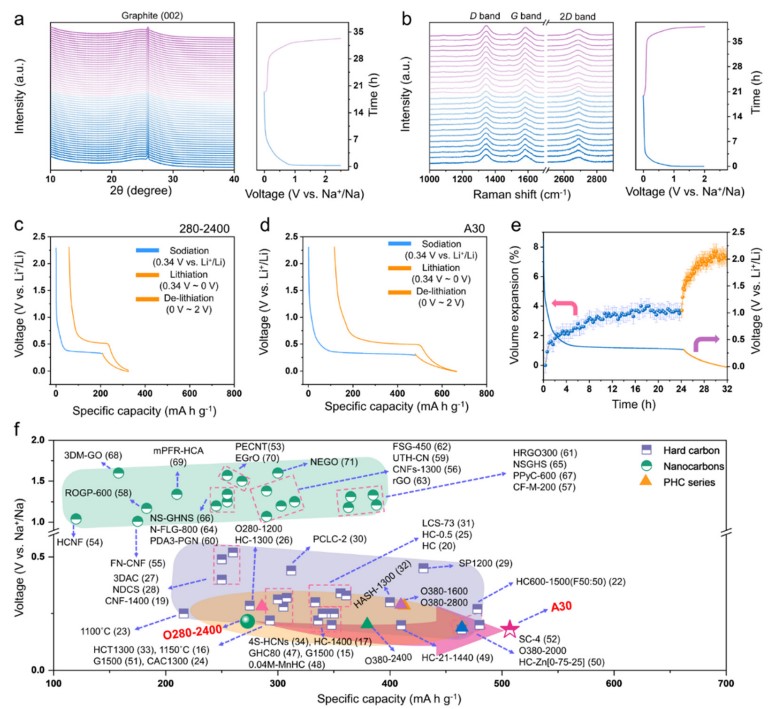Design guideline for a high-performance hard carbon anode on sodium ion batteries
- Year
- 2024
- Author
- Jong Chan Hyun, Hyeong Min Jin, Jin Hwan Kwak, Son Ha, Dong Hyuk Kang, Hyun Soo Kim, Sion Kim, Min Hyuck Park, Chan Yeol Kim, Juhee Yoon, Ji Sung Park, Hee-Dae Lim, Se Youn Cho, Hyoung-Joon Jin, Young Soo Yun*
- Journal
- Energy & Environmental Science
- Vol
- 17
- Page
- 2856

Unclear information for materials design is the major hurdle to construct a better hard carbon anode with high sodium plateau capacity (SPC). Despite that pore volume ratio of hard carbon provides thermodynamic limitation for theoretical sodium plateau capacities (TSPCs), it is not enough to predict the practicable SPCs from its materials properties. Herein, a key kinetic parameter of hard carbons to mainly affect the coefficient of capacity utilization (CCU) for SPCs was investigated by using multiple series of polymeric hard carbons (PHCs) with different microstructures. The systematic study reveals a close relationship between 2D to G band intensity ratio (I2D/IG) in Raman spectrum and internal kinetic barrier for sodium ion transfer. Based on the thermodynamic and kinetic parameters, the structural indicator called as ‘SPC factor’, is developed to characterize the CCU for SPCs. The SPC factor clearly describes an optimal hard carbon anode as those which possessing higher closed pore volume ratio and lower I2D/IG value. According to the design guideline, the highest SPC of ~400 mA h g-1 has been achieved through simple microstructural tuning of the PHCs, which demonstrates the feasibility of the design guideline for a high-performance hard carbon anode on sodium ion batteries.